Siteco Industrial lights



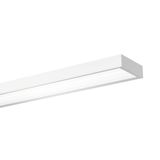
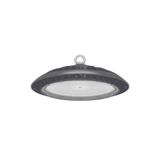
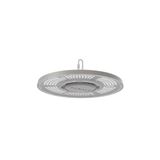
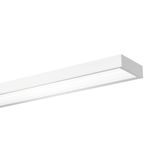



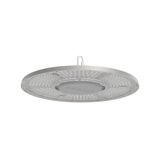
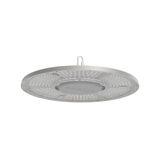
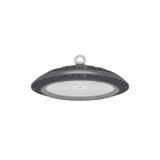

siteco industrial luminaires Application scope and design logic
Factories, logistics halls, and chilled warehouses need luminaires that hold flux, keep PF and THD honest, and stay sealed after the third maintenance cycle. Siteco builds around robust die-cast or extruded housings with polymer end caps, silicone gaskets, and coated optics that resist dust film. Lumen packages typically span ~8 000 to 60 000 lm with efficacies in the 140–190 lm/W band, CRI 80/90 options, CCT 3000/4000/5700 K, and driver PF ≥ 0.95 at nominal load. Ambient ranges cover −30…+50 °C by family; cold-store variants carry conformal-coated boards and vent membranes to avoid pump-down condensation.
siteco highbay fixtures Optics, mounting, and thermal
Distributions include narrow (30–60°) for racked aisles, medium/wide for open bays, and asymmetric wall-wash for service corridors. Lenses are PMMA/PC with IK08/IK10 impact classes; glare control uses micro-prismatic films or deep reflectors to keep UGR manageable under 12–16 m heights. Suspensions: M12 eye-bolt, wire-rope grippers, or rigid tube; tilt brackets help aim over work cells. Thermal paths rely on finned bodies with vertical chimneys—leave ≥150 mm clearance above to preserve ΔT. Drivers sit in segregated cavities; Tc marks are printed where a tech can actually see them.
siteco warehouse luminaires Photometrics and safety
Uniformity beats raw lux in aisles. Aisle optics paired with 12–16 m mounting give 0.6–0.7 Emin/Ē without blowing energy. Flicker metrics meet office-grade targets (PstLM ≤ 1.0, SVM ≤ 0.4) on the right drivers—handy for scanners and cameras. Surge immunity is commonly 6 kV L–N / 8 kV L/N-PE; add Type 2 SPD upstream. Emergency options: integral 1–3 h packs or central-battery inverters with maintained/unmaintained heads; photometric files include EM flux so egress calculations aren’t guesswork. Clear polycarbonate diffusers are the workhorse; choose tempered glass where solvents or hot-wash live.
siteco production hall lighting Controls, EMC, and task tuning
Controls matter more than lamp watts. DALI-2 drivers (DT6/DT8) allow aisle-by-aisle daylight harvesting and task scenes; presence sensors with hold-time and fade curves keep lifts moving without “light waves.” 1–10 V remains viable for simple zoning, but document minimum-level behavior. Electromagnetic discipline: keep VFD feeders on segregated trays, bond gland plates 360°, and use luminaires with shielded driver compartments when welders share the hall. For food and pharma, smooth-body IP66/IP69K variants with stainless hardware pass hygiene audits.
Performance data, standards, and durability
Safety/control gear to IEC/EN 61347-2-13 with SELV where applicable; luminaire safety per EN 60598-1/-2-xx. EMC emissions EN 55015, immunity EN 61547; harmonics EN 61000-3-2 Class C where >25 W. Optical tests to LM-79; source maintenance from LM-80/TM-21 projections—L80 50 000–100 000 h at rated Tc is typical when heat paths are respected. Ingress classes span IP54–IP69K; impact up to IK10. Corrosion-class coatings meet ISO 9227 salt-spray ranges for coastal docks; stainless fixings avoid tea-staining on washdown lines.
Integration and retrofit strategy
Swapping legacy 250/400 W HID? Target 12–22 klm nodes, respect ceiling reflectances, and verify Zs after current drops on long runs. Keep existing chain centers when possible—Siteco adapters hit common bolt patterns so lifts don’t revisit bays. For rack aisles, rotate optics to follow the aisle, not the beam number in the BIM. When drawings specify siteco led industrial lighting, specify per row: lumen node, optic, mounting height, target Ē/UGR, driver type, SPD policy, and control channel count. Where corporate ESG metrics apply, metered drivers expose kWh and burning hours to the BMS.
Selection criteria for B2B buyers
- Define task and lux: open floor vs aisles vs inspection benches; pick beam and lumen pack to hit Ē and Emin/Ē.
- Temperature and chemicals: choose ambient class, gasket, and window material for oils, cleaners, or −30 °C freezers.
- Electrical: PF/THD targets, inrush (A/μs) for breaker diversity, surge class, and wiring window (often 1.5…6 mm²).
- Controls: DALI-2 for addressability and DT8 tunable white; 1–10 V or switch-dim for simple zones; presence/daylight per bay.
- Maintenance: accessible gear trays, plug-in drivers, and spare lens kits; keep Tc 10–15 K under max for warranty headroom.
- Documentation: photometry (IES/LDT), LM-80/TM-21 nodes, IP/IK, torque data—auditors stop asking when the pack is complete.
Procurement and field notes
Standardise two suspension lengths per hall; straight lines stay straight. Order spare gaskets and lens seals in the first drop; water ingress rarely comes from LEDs, it comes from missing screws. On brownfield boards, map inrush and AFDD compatibility early—some drivers need type-C curves or staggered start. If the schedule uses the broader term siteco industrial led lights, keep model families consistent per zone to avoid patchwork photometry and mixed spares.
Energy and lifecycle
With smart zoning and aisle/daylight trim, siteco energy efficient luminaires routinely cut kWh 45–65% against HID, more when schedules kill after-hours spill. Heat is the enemy: keep dust off fins, set PM for seasonal cleaning, and verify airflow around drivers in enclosed trusses.
Campus standards often call fixtures simply “siteco industrial luminaires.” For tender clarity, append mounting type, beam, lumen/CCT/CRI, driver/control, IP/IK, SPD, and ambient class to each tag. If roadway docks and canopies are in scope, carry the same control backbone outdoors to keep commissioning tools and spares common.
Advantages of working with Bankoflamps
We translate lumen nodes, optics, driver options, ambient classes, and control topology straight from your layouts, then show live EU stock by warehouse before lifts are booked. Quotes usually land in about an hour with EAN/MPN, inrush and PF/THD data, IP/IK and surge class, mounting kits, and conductor windows—so selections don’t drift mid-phase. Your portal shows lead times, consolidated shipment status, and downloadable price lists with validity dates; approved clients can use post-payment up to 30 days. We consolidate by hall/aisle or cell to cut freight and site sorting, and your account manager cross-checks breaker diversity, SPD policy, aisle optics, bracket spacing, and DALI loop budgets against your drawings—so crates arrive build-ready and crews light the hall once.